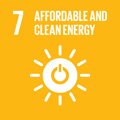- Docente: Antonio Barletta
- Credits: 6
- SSD: ING-IND/10
- Language: Italian
- Teaching Mode: Traditional lectures
- Campus: Bologna
- Corso: Second cycle degree programme (LM) in Energy Engineering (cod. 0935)
Learning outcomes
The course is devoted to laminar and turbulent fluid mechanics, for both isothermal and convection flows. These subjects are important for the student to reach the ability of treating applied problems of heat and fluid flow also by means of computational techniques.
Course contents
Models of Fluid Dynamics and Convection: Elementary
concepts of fluid mechanics - Reynolds transport theorem - Rigorous
deduction of local balance equations for a fluid - Boussinesq
approximation - Vorticity - Two-dimensional flows, streamfunction -
Irrotational flow: velocity
potential, unsteady Bernoulli equation - Irrotational
two-dimensional flow, complex velocity potential, streamlines and potential lines.
Boundary Layer Theory: Prandtl hypothesis for
two-dimensional incompressible flows - Order of magnitude method -
Momentum boundary layer: simplification of local momentum balance
equation - Thermal boundary layer: simplification of local energy
balance equation.
Similarity Solutions for External Flows: Blasius solution for the flow around a
plane: velocity field and drag coefficient - Evaluation of the
temperature field and of the Nusselt number.
Compressible Flows and Waves in a Fluid: General
description - One-dimensional case - Three-dimensional case.
Stability of Laminar Flows and Introduction to
Turbulence: Stability and instability, logistic equation, heat conduction equation - Linear
stability analysis of flows: Poiseuille flow in a plane channel -
Orr-Sommerfeld equation and stability diagram - Analysis of
turbulent flows: average components and stochastic components -
Reynolds equations for two-dimensional turbulent flows - Reynolds
tensor - Boussinesq hypothesis: eddy viscosity, eddy diffusivity,
turbulent Prandtl number - Closure problem of Reynolds equations
and turbulence models - Algebraic turbulence model: mixing length,
Prandtl relationship.
Heat and Fluid Flow in Porous Media: Description of
fluid flow in a porous medium - Darcy's law - Permeability of a
porous medium - Darcy-Forchheimer's law - Local mass
and energy balance equations - Examples of fluid flow in porous media.
Natural and Mixed Convection: Mixed convection in a plane parallel channel - Flow reversal effect, special case of free convection - Rayleigh Bénard problem.
Readings/Bibliography
- Lecture notes.
- S. Kakaç, Y. Yener - Convective Heat Transfer - CRC Press, 1994.
- V.S. Arpaci, P.S. Larsen - Convection Heat Transfer - Prentice-Hall, 1984.
- A. Barletta - Applicazioni della Fisica Termica. Argomenti Complementari di Fluidodinamica e Termocinetica - Pitagora, Bologna, 2002.
- A. Bejan - Convection Heat Transfer - Wiley, 1984.
Teaching methods
Classroom lessons and guided solution of exercises
Assessment methods
Concerning the teaching unit Thermo-Fluid-Dynamics M the exam
consists in an oral test. The oral test is oriented to the
evaluation of the achievement of an appropriate knowledge on the
basic topics of the course, both under the theoretical perspective
and for the capability to formulate, from a physico-mathematical
viewpoint, and solve elementary problems of heat and fluid flow.
The final mark, less or equal than 30 (positive outcome is greater
or equal than 18), expresses the overall evaluation on the
theoretical knowledge and on the practical ability with respect to
problem solving.
The final mark on the entire integrated course made of Heat
Transfer (Graduate Course) and Heat and Fluid Flow (Graduate
Course) is the arithmetic mean of the marks obtained in the
two separated exams: Heat Transfer (Graduate Course); Heat and
Fluid Flow (Graduate Course). The partial mark in one of two modules of the integrated course is valid for twelve months. If within twelve months the student does not pass the exam on the whole integrated course, the mark on the single module loses its validity.
Teaching tools
Blackboard lessons, pc presentations, examples of numerical
solutions
Links to further information
http://www.unibo.it/docenti/antonio.barletta
Office hours
See the website of Antonio Barletta
SDGs

This teaching activity contributes to the achievement of the Sustainable Development Goals of the UN 2030 Agenda.
